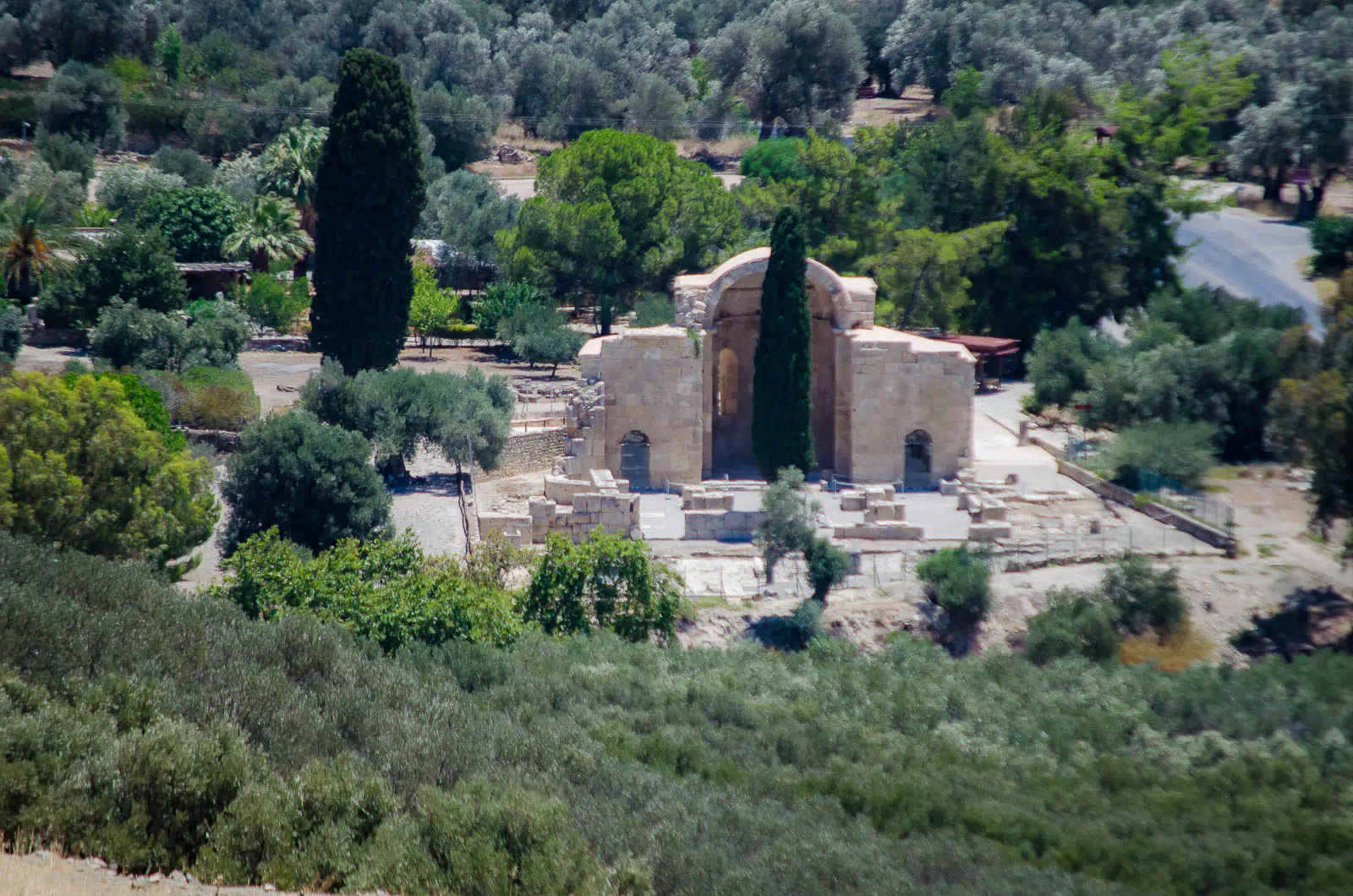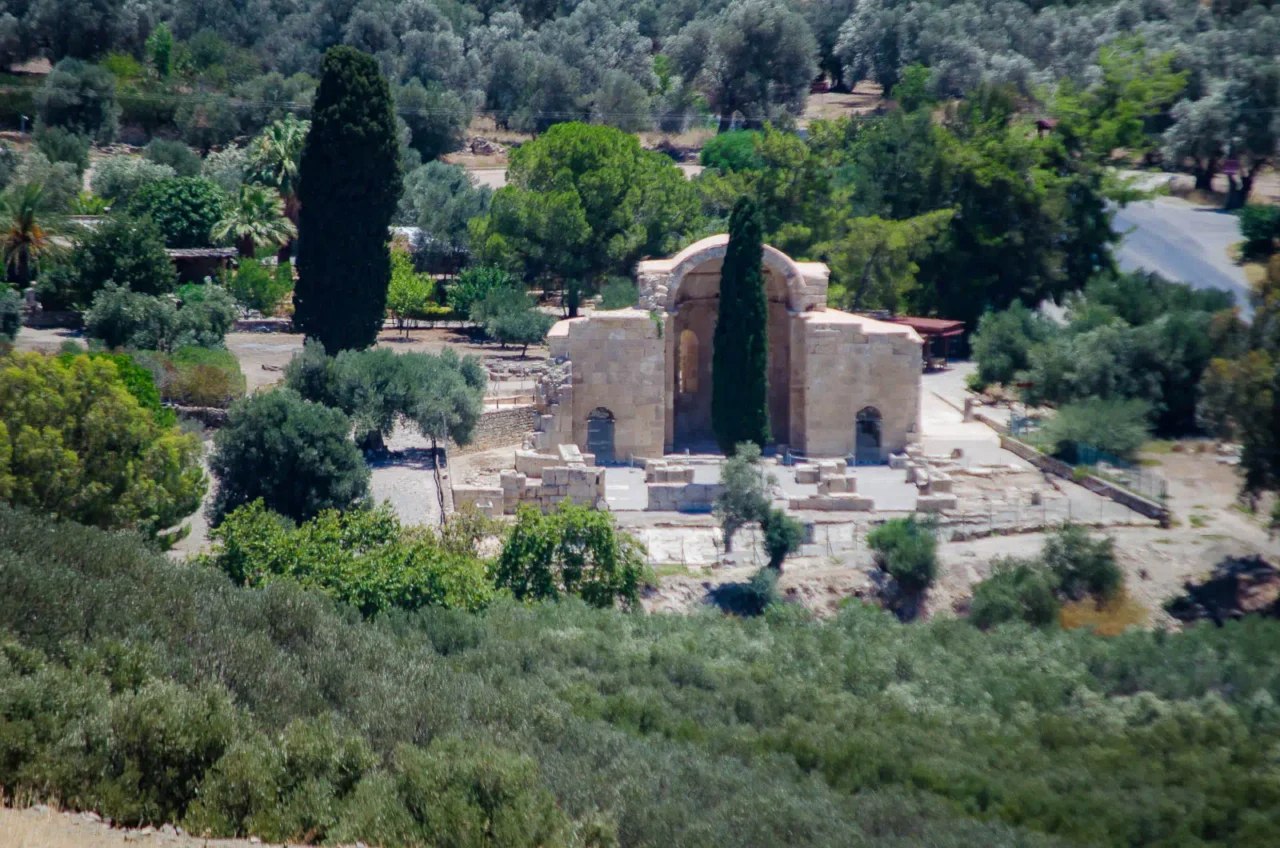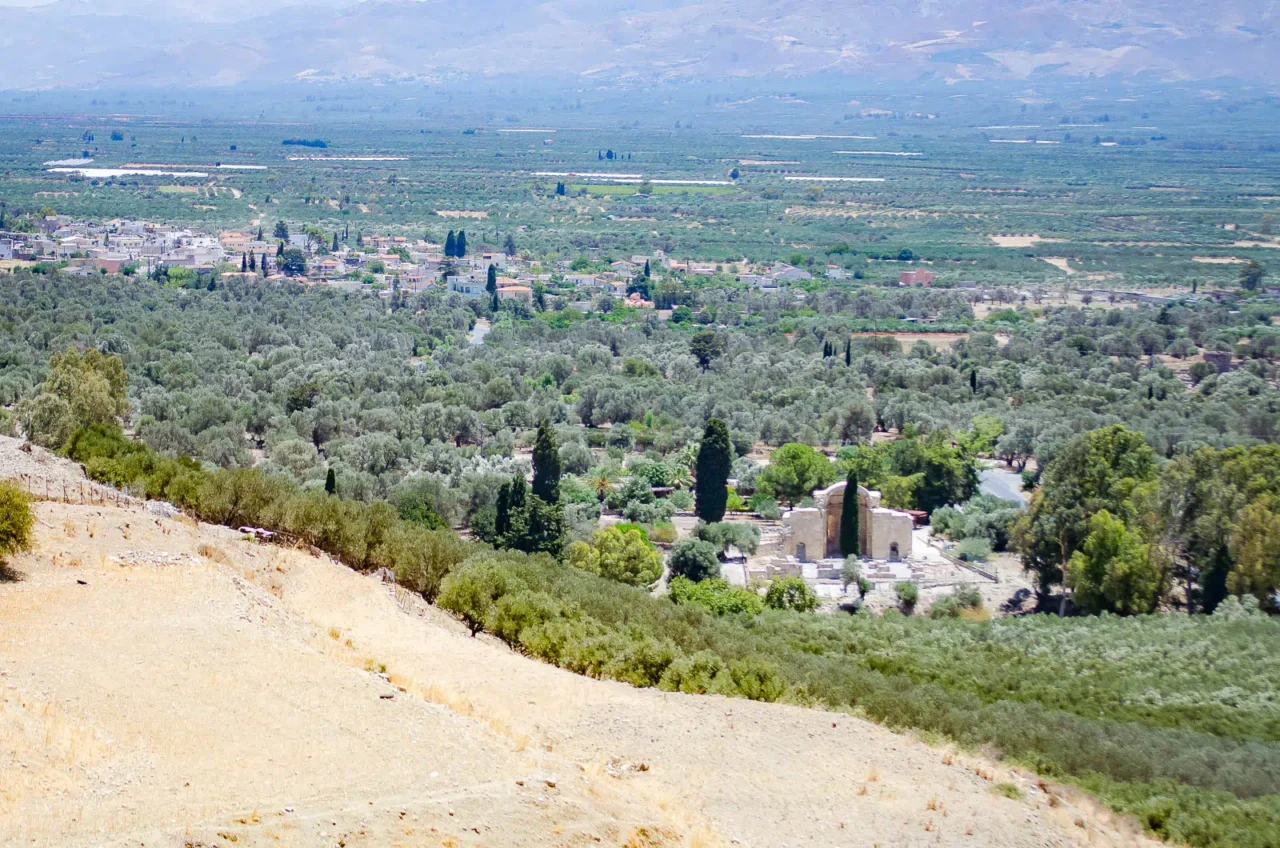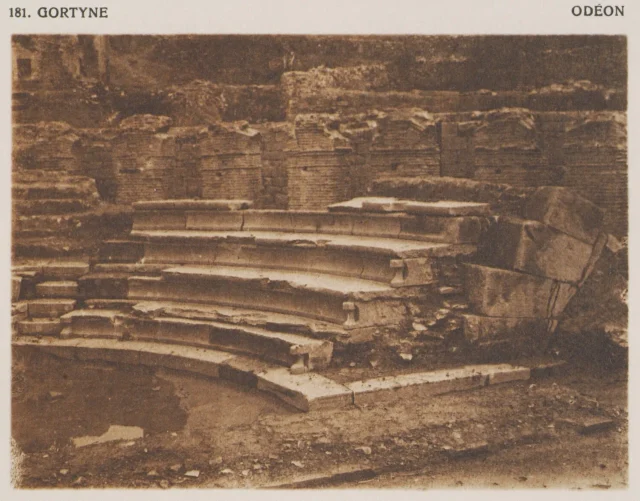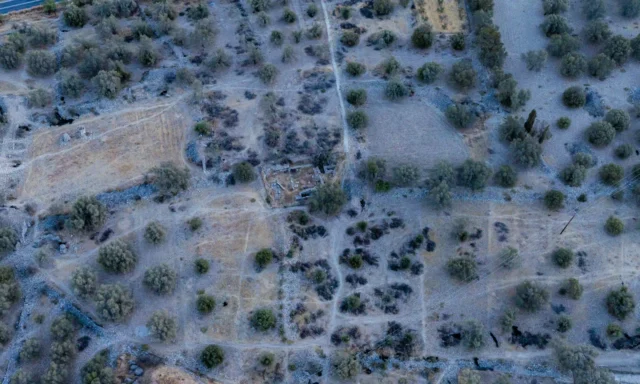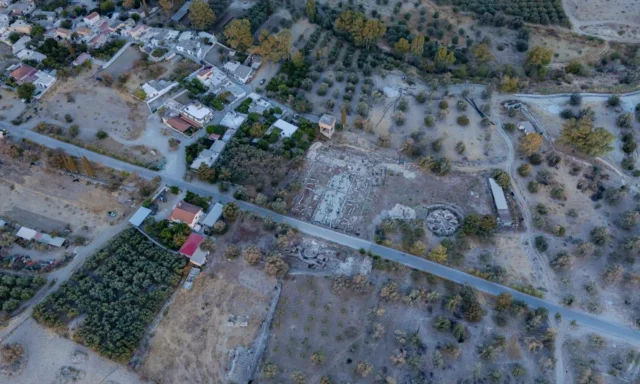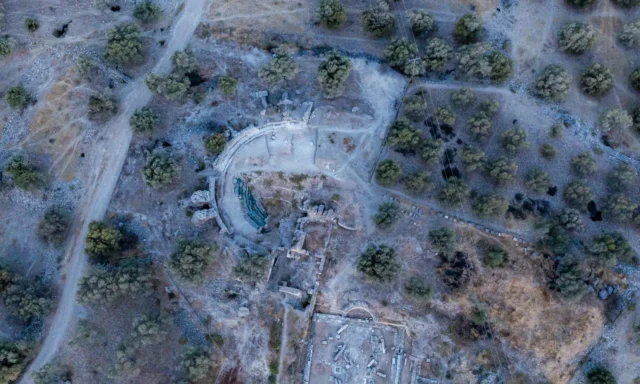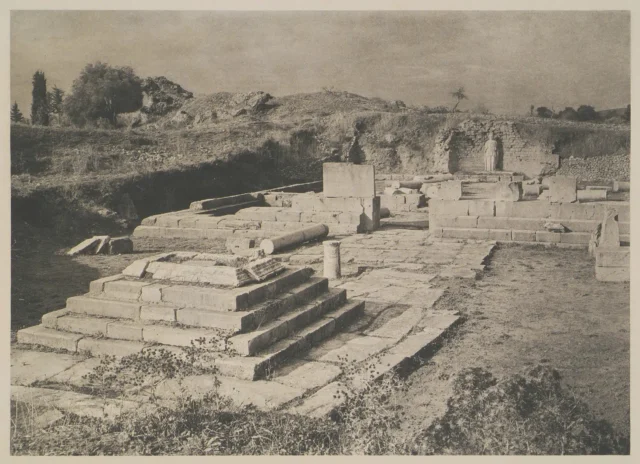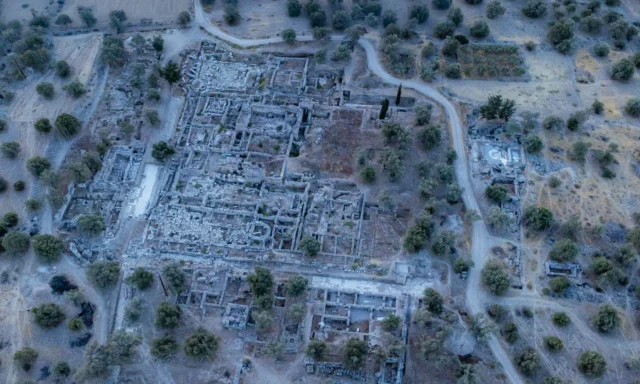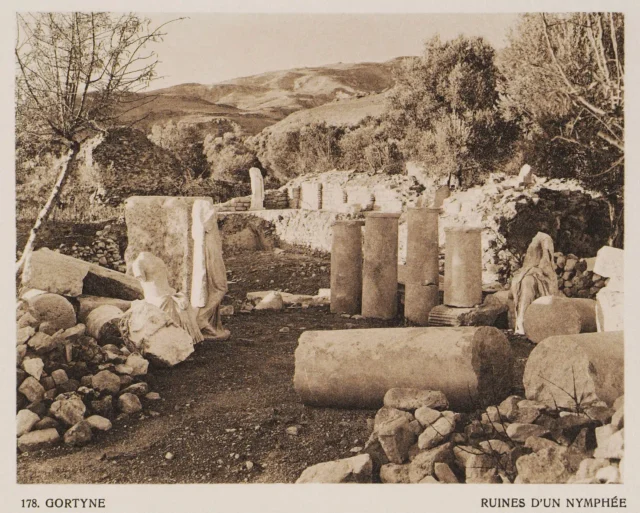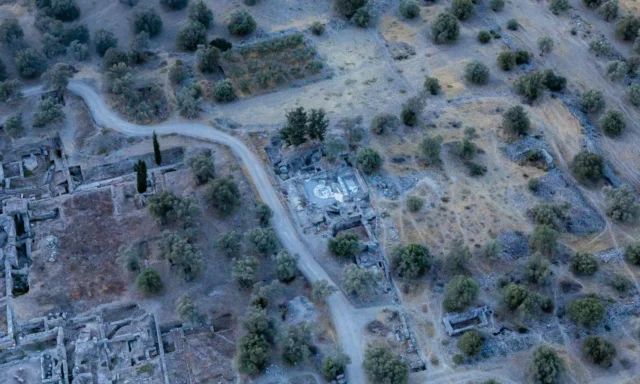A Monument to Early Christianity
The Basilica of Agios Titos (Saint Titus), an imposing structure located in the heart of Gortyna, stands as a testament to the city’s significant role in the early Christian world. The basilica’s construction and subsequent modifications reflect the evolving religious landscape of Gortyna, from its pagan past to its flourishing as a center of Christianity.
The First Basilica: A 5th-Century Foundation
The earliest phase of the basilica dates back to the 5th century AD, a period marked by the gradual decline of paganism and the rise of Christianity in Gortyna. The original form of this first basilica remains unknown, as it was later superseded by a grander structure in the 6th century. However, its existence points to the early establishment of a Christian community in the city.
The Justinianic Basilica: A Monumental Endeavor
The 6th century witnessed the construction of a magnificent new basilica, attributed to Emperor Justinian and Bishop Theodoros. This five-aisled basilica, measuring 67 by 33 meters (excluding the atrium), was a monumental undertaking, ranking among the largest and most impressive churches of its kind.
The basilica’s interior was adorned with lavish decorations, including opus sectile floors, mosaics, and marble columns. The sanctuary featured a synthronon (a semicircular bench for clergy) and an ambulatory, allowing for the movement of worshippers around the altar. A large ambo (a raised platform for readings) and a solea (a raised walkway) further enhanced the basilica’s liturgical function.
The Cult of Martyrs and Pagan Traditions
The basilica also incorporated elements that reflect the persistence of pagan customs in early Christian Gortyna. Several tombs within the church, including one in the nave and others in a separate space, featured vents for libations, a practice associated with the veneration of the dead in pagan traditions. This suggests a blending of Christian and pagan practices during the early stages of the city’s Christianization.
The Heraclian Basilica: Rebuilding and Renewal
The Justinianic basilica was severely damaged by an earthquake in 620 AD. During the reign of Emperor Heraclius, the basilica was extensively rebuilt, retaining its original plan and dimensions but incorporating new architectural features. The nave’s mosaic floor was covered with marble slabs, and a transept was added between the sanctuary and the main body of the church. The ambo was also rebuilt, drawing inspiration from the one in Hagia Sophia in Constantinople.
Decline and Abandonment
The final abandonment of the basilica occurred after the catastrophic earthquake of 670 AD, which also marked the end of Gortyna as a major urban center. The once-thriving city fell into ruin, and the basilica, along with other monuments, was left to the elements.
Archaeological Site: Key Points
- Construction Period: 5th-7th centuries AD
- Location: South of the modern settlement of Metropolis, Gortyna
- Dimensions: 67 by 33 meters (excluding the atrium)
- Historical Significance: Served as the metropolitan church of Gortyna, reflecting the city’s importance in early Christianity. Showcases the transition from paganism to Christianity, with the incorporation of some pagan customs into the Christian basilica
- Current Status: The ruins of the basilica are preserved at the archaeological site of Gortyna, offering visitors a glimpse into the city’s rich Christian heritage
Citations
- Baldini Lippolis, Isabella & Giulio Vallarino. 2013. “Gortyn: from City of the Gods to Christian City.” In Cities and Gods: Religious Space in Transition, edited by Ted Kaizer, Anna Leone, Edmund Thomas, and Robert Witcher, 103-120. Leuven – Paris – Walpole, MA: Peeters.








